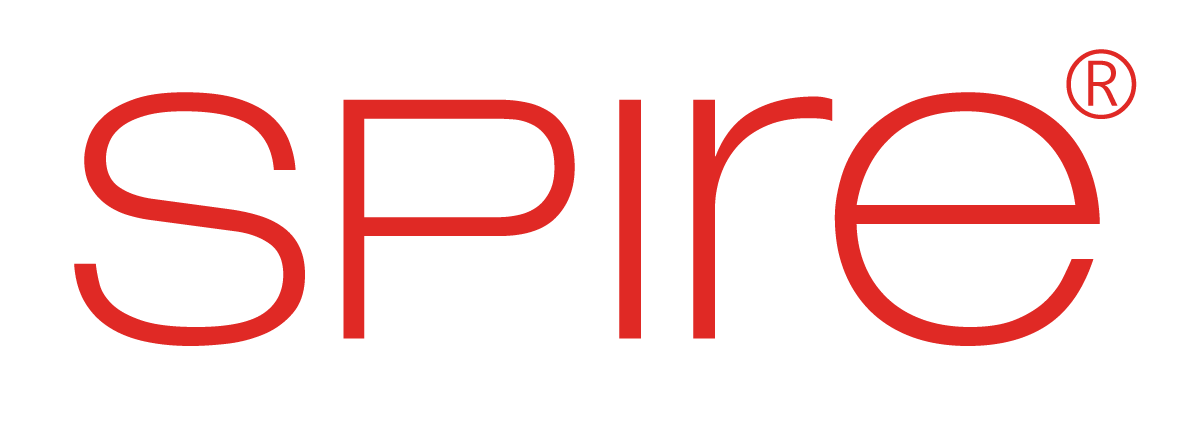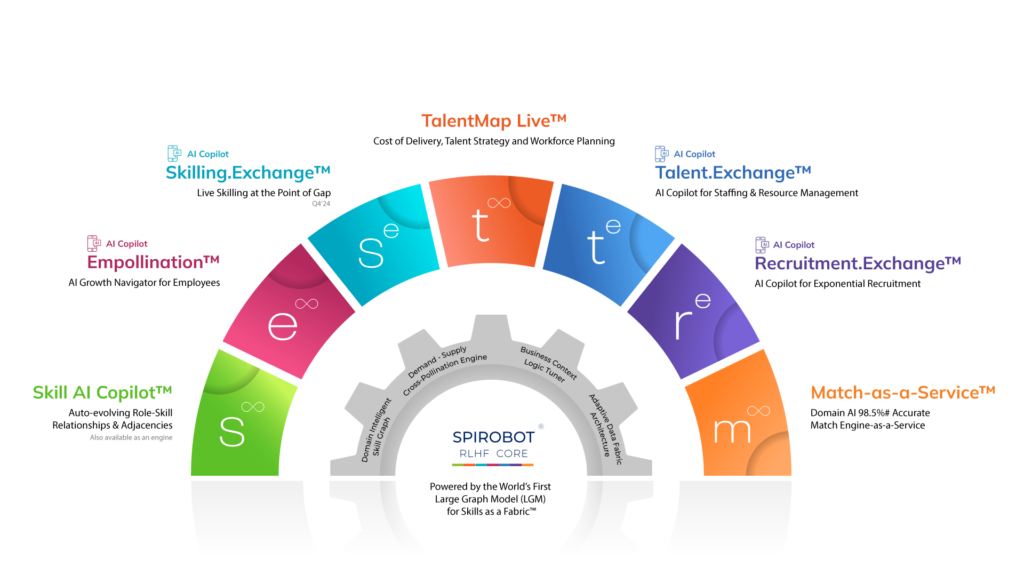Skills are your new currency. They determine who gets hired, who advances, and ultimately, who drives innovation. Yet, many organizations continue to treat skills as static checklists, fixed qualifications assigned to roles and frozen in time. This mindset is not only outdated but increasingly risky.
The truth is, skills are in constant motion. They emerge, evolve, converge, and decay. What was considered a must-have yesterday may become irrelevant tomorrow. And what’s on the horizon today could define the next generation of talent and business models.
Spire.AI challenges the notion of skills as fixed assets. At the heart of our platform is the belief that skills behave more like dynamic particles in a spatial matrix, constantly interacting, reshaping, and branching into new forms. This dynamicity demands a new approach to how organizations map, track, and leverage skills.
The Dynamic Nature of Skills: A Closer Look
Understanding what makes a skill dynamic is key to unlocking organizational agility. While many frameworks still classify skills as fixed attributes tied to job descriptions, the reality is far more fluid. Skills evolve alongside technology, market needs, and individual career paths.
This section breaks down the different ways in which skills shift over time and why organizations must track and adapt to this movement proactively.
So, what exactly makes a skill “dynamic”?
- Emergence: New skills surface as technologies, industries, and job functions evolve. For example, the rise of generative AI has created demand for prompt engineering, synthetic data modeling, and ethical AI governance, roles that didn’t exist a few years ago.
- Transformation: Existing skills evolve into new forms. A marketing analyst skilled in traditional SEO may now need to understand AI-assisted content optimization. The skill isn’t obsolete, but it has transformed.
- Adjacency: Skills don’t evolve in silos. They connect and build on one another. A UX designer, for instance, may expand into customer journey analytics or voice UI design, adjacent domains driven by technological convergence.
- Decay: Some skills decline in relevance due to automation or changing priorities. Manual data entry, for example, is increasingly redundant. Recognizing decaying skills helps avoid investing in obsolete capabilities.
- Recontextualization: Skills may gain new meaning in different contexts. Python programming in financial services has very different implications from its use in bioinformatics or cybersecurity.
This fluid behavior is why skills must be treated as living entities within a constantly shifting ecosystem.
Why Traditional Skills Frameworks Fall Short
Despite the clear dynamism in how skills evolve, most organizations are still relying on static, outdated models to define, assess, and manage skills. Traditional skills frameworks were designed in a slower-moving era, where job roles were well-defined and talent needs changed at a more predictable pace. These models often consist of fixed lists of required competencies that are updated infrequently and disconnected from real-time labor trends or business context.
This results in a fundamental mismatch between workforce realities and talent strategies. Organizations continue building job descriptions, hiring strategies, and compensation benchmarks on frameworks that don’t reflect the dynamic nature of the modern skill landscape. As roles evolve and new skills emerge at unprecedented speeds, static frameworks simply can’t keep up.
Conventional skills frameworks are linear and rigid. They are often manually updated, static in nature, and disconnected from real-time labor market signals. As a result, they fail to capture the fluidity of how roles and responsibilities evolve on the ground.
This leads to:
- Outdated job descriptions
- Mismatched talent sourcing
- Inaccurate compensation benchmarking
- Misaligned learning and development (L&D) programs
In short, businesses are building workforce strategies on incomplete and outdated skill intelligence.
Introducing Spire.AI’s Skills AI Copilot and the Large Graph Model (LGM) for Skills
At Spire.AI, we’ve built our Skills Intelligence platform on a radically different foundation, a Large Graph Model (LGM) for Skills that evolves in real time. With over 11 million interconnected skill nodes, this model dynamically maps how skills relate, cluster, evolve, and decay across industries.
Our Skills AI Copilot leverages this model to:
- Decode current skill states across roles, domains, and regions
- Predict emerging skills and declining ones using labor and spot market signals
- Map adjacent skills that support mobility and reskilling pathways
- Benchmark compensation based on real-time skill value, not outdated job titles
This graph-based, self-evolving matrix empowers organizations to move beyond job titles and adopt a skills-first mindset.
How This Dynamic View of Skills Translates to Business Impact
Understanding the dynamic nature of skills isn’t just a conceptual shift, it has direct, measurable implications for how organizations operate. When businesses begin to treat skills as ever-evolving signals rather than static assets, they unlock new levels of agility across talent planning, development, and deployment.
- Smarter Workforce Planning: With a dynamic skill map, workforce planners can forecast the skills their organization will need, not just now, but 6 to 18 months down the line. This helps avoid both under- and over-investment in talent.
- Faster Talent Redeployment: Real-time visibility into skill adjacencies enables cross-functional mobility. Employees whose current skills are nearing obsolescence can be quickly guided into growth areas.
- Precision Job Leveling & Valuation: Instead of relying on generic job leveling frameworks, Spire.AI provides skill-based valuations informed by live market data. This supports fairer compensation practices and sharper job architecture.
- Real-Time Learning Alignment: Learning content can be tailored to individual skill gaps in real time, ensuring that training investments directly support both employee growth and business goals.
- Informed Hiring Decisions: Recruiters can use dynamic skill data to hire for adaptability and adjacent capability, not just for a static role profile.
Case Example: Navigating the AI Disruption
Consider a mid-sized consulting firm adapting to client demand for AI advisory services. Its existing team has strong analytics and industry domain expertise, but limited exposure to machine learning or generative AI.
Using Spire.AI, the firm maps current skills across the team, identifies emerging AI-related competencies, and recommends adjacent upskilling pathways. Employees skilled in statistical modeling are guided toward prompt engineering. Those in digital transformation roles are nudged into ethical AI and automation governance.
The result? The firm can seamlessly transition its workforce to new capabilities within weeks, rather than months, without relying solely on external hiring.
Why Your Organization Needs to Act Now
Skills volatility is no longer the exception, it’s the norm. Organizations that continue to use outdated frameworks risk falling behind in innovation, losing top talent, and misfiring on workforce investments.
A dynamic approach to skills is no longer optional. It is the foundation for building adaptive, resilient, and future-ready organizations.
By embracing Spire.AI’s continuously evolving skill intelligence, leaders can:
- Stay ahead of industry trends
- Future-proof their workforce
- Unlock hidden talent potential
- Build equitable, competitive compensation structures
The Dynamic Skill is the New Strategic Asset
To thrive in today’s talent economy, organizations must stop thinking of skills as checkboxes and start treating them as evolving signals. The ability to decode, track, and act on these signals in real time and at scale is what will define tomorrow’s most successful enterprises.
Spire.AI’s Skills AI Copilot and LGM for Skills offer exactly that: a living, breathing skills ecosystem that evolves with your business. Don’t let outdated frameworks limit your potential.
The future of work belongs to those who understand that a dynamic skill isn’t a problem to manage it’s a competitive advantage to harness.







